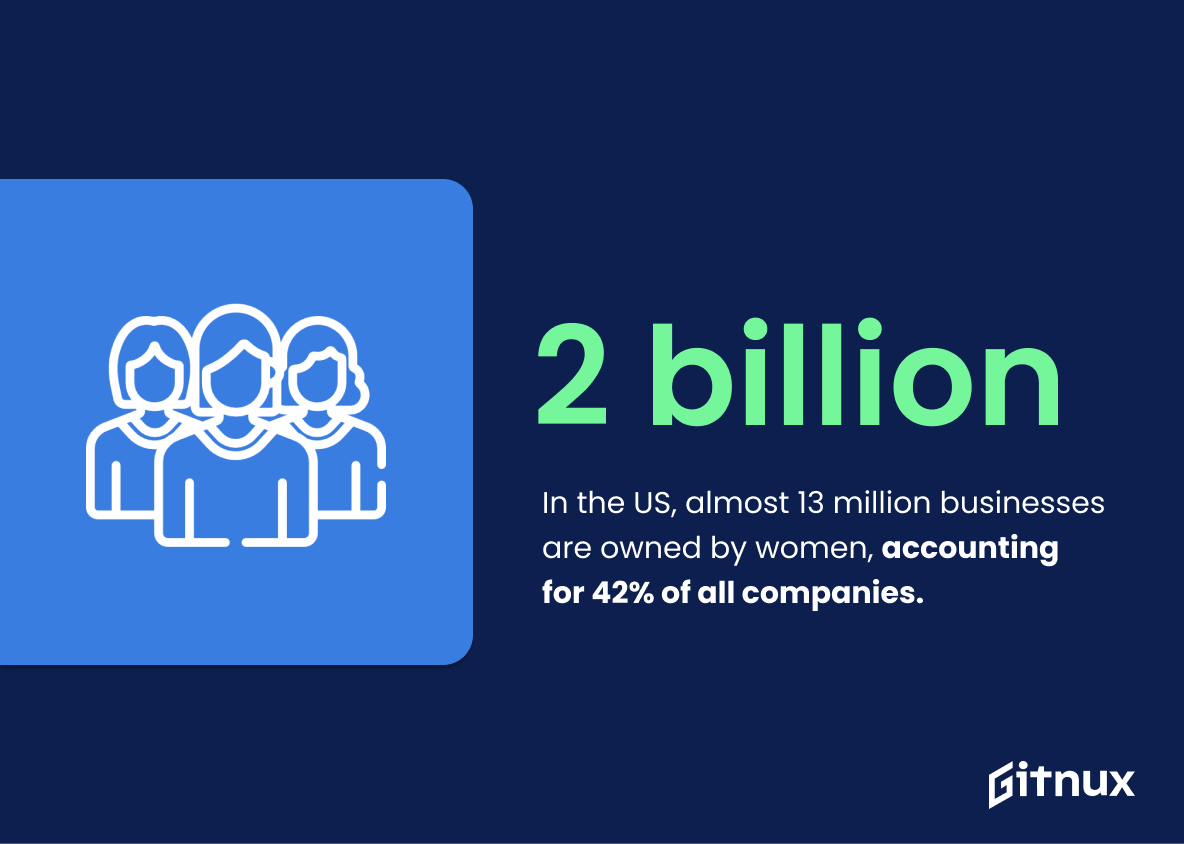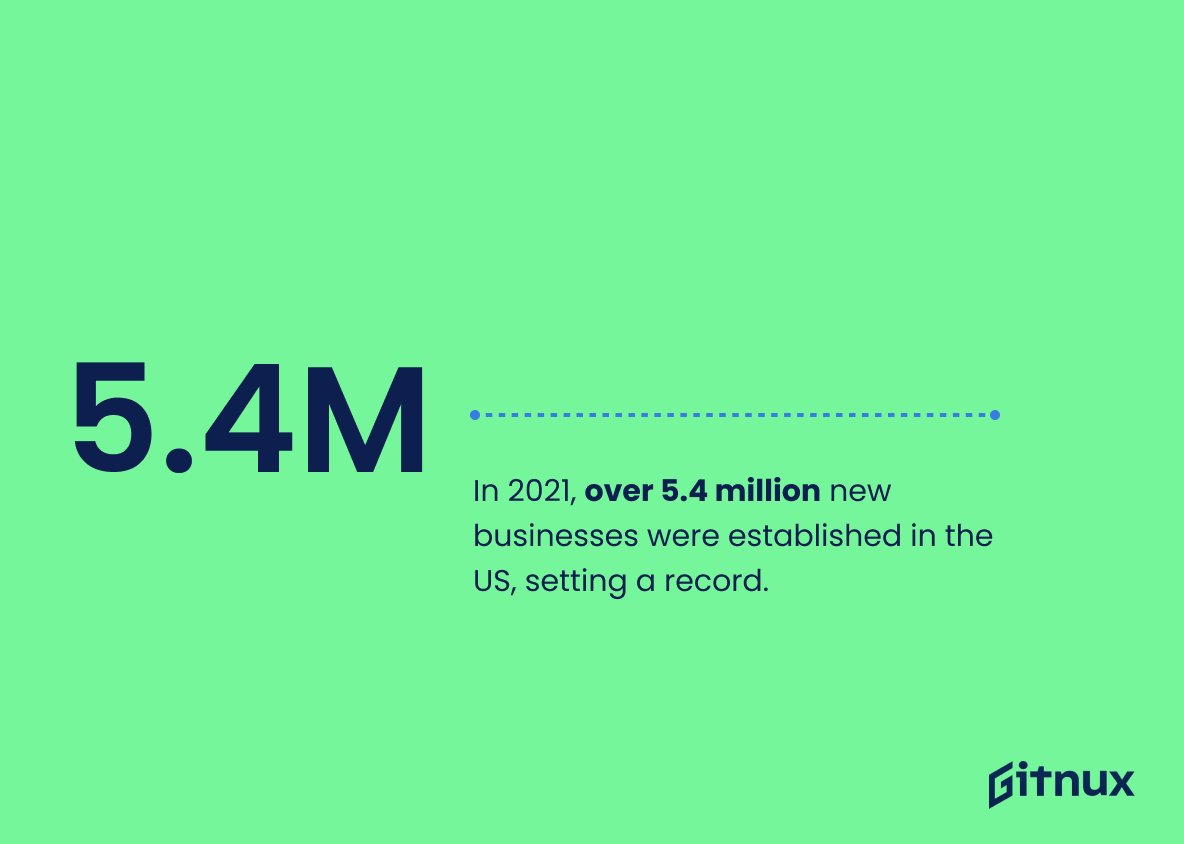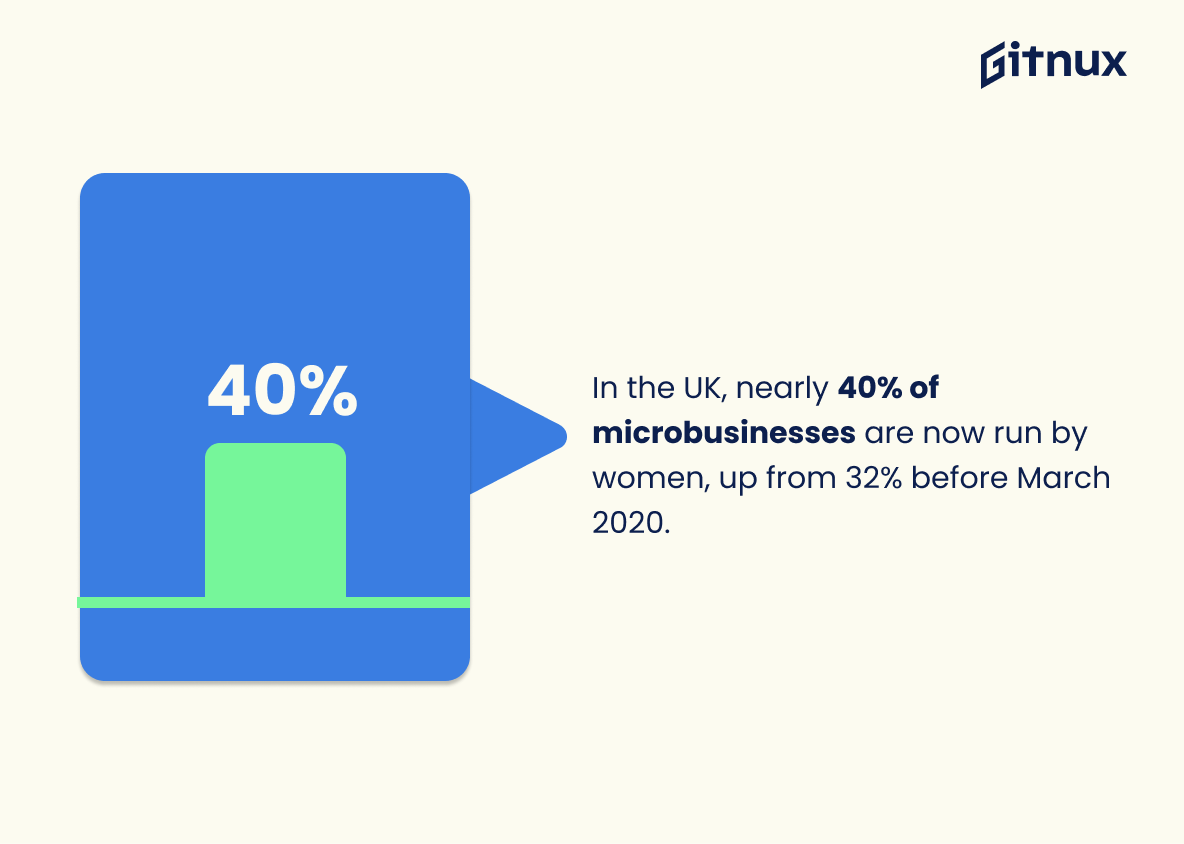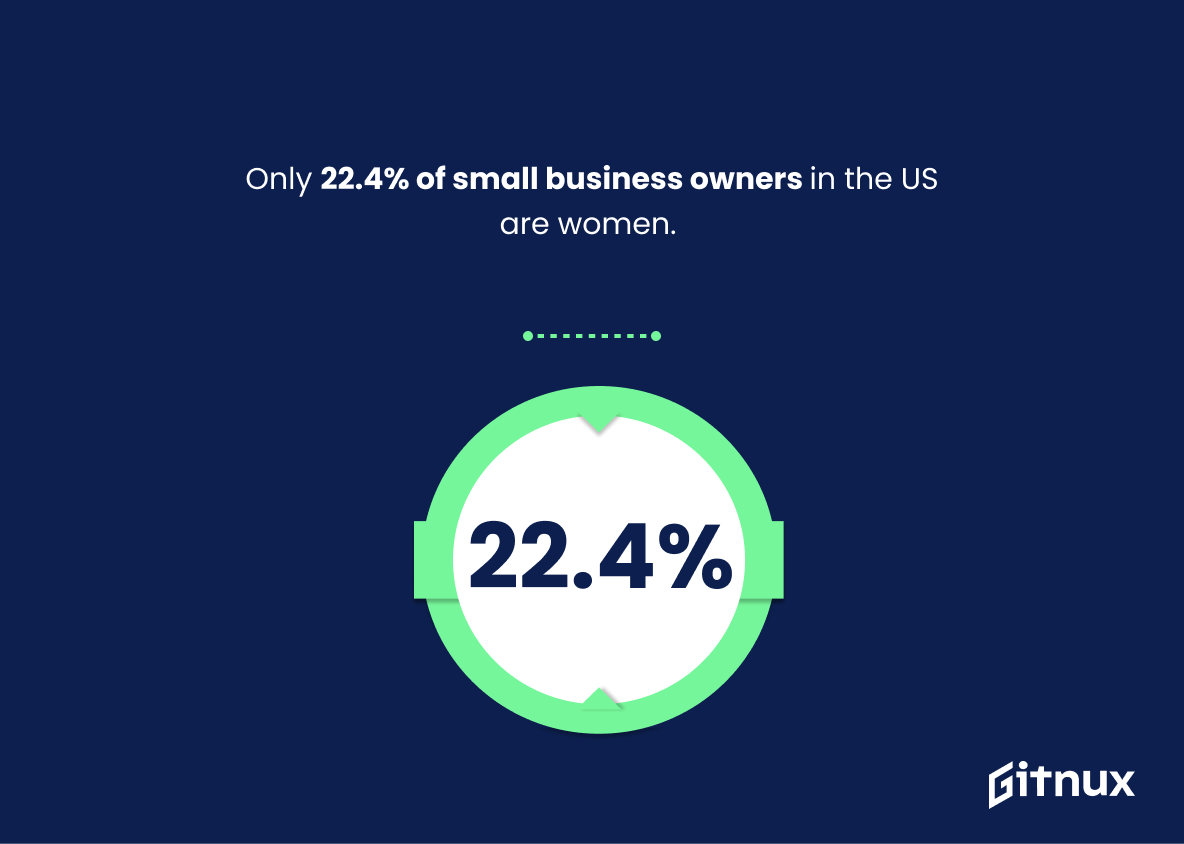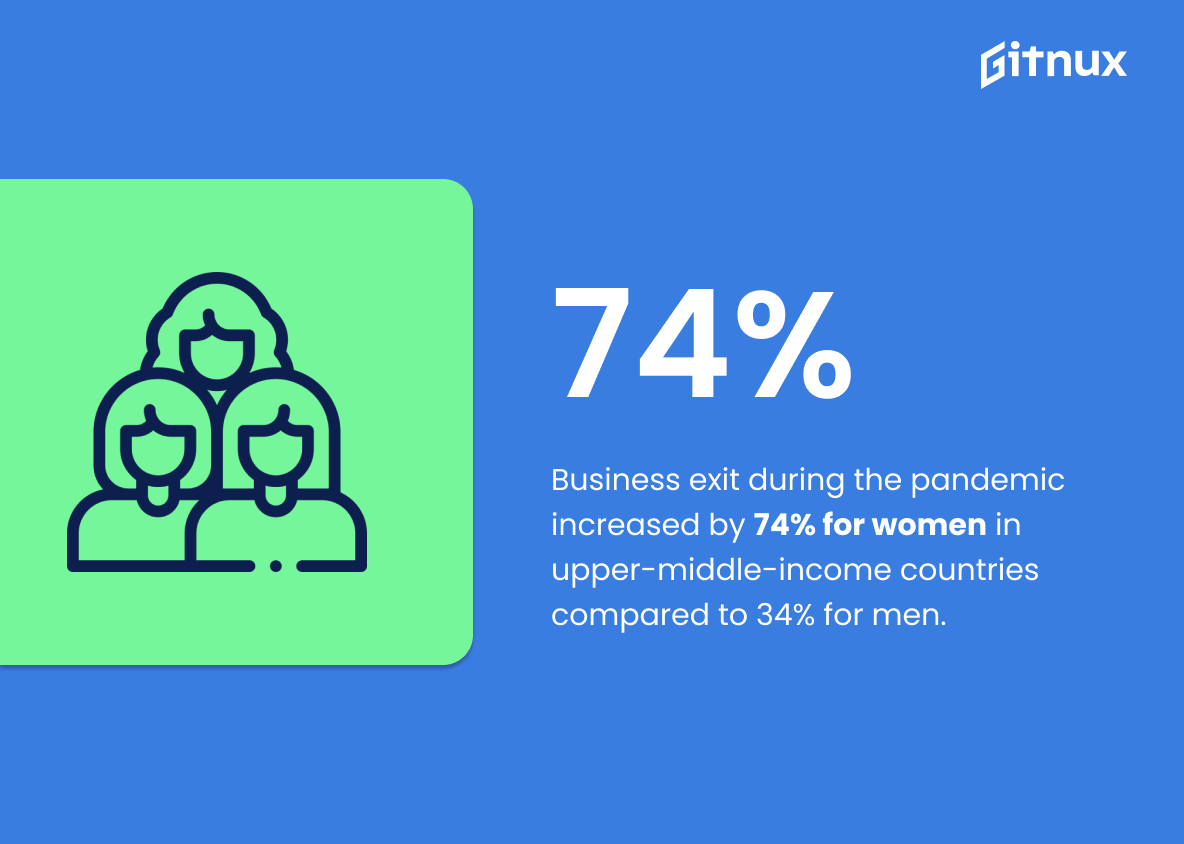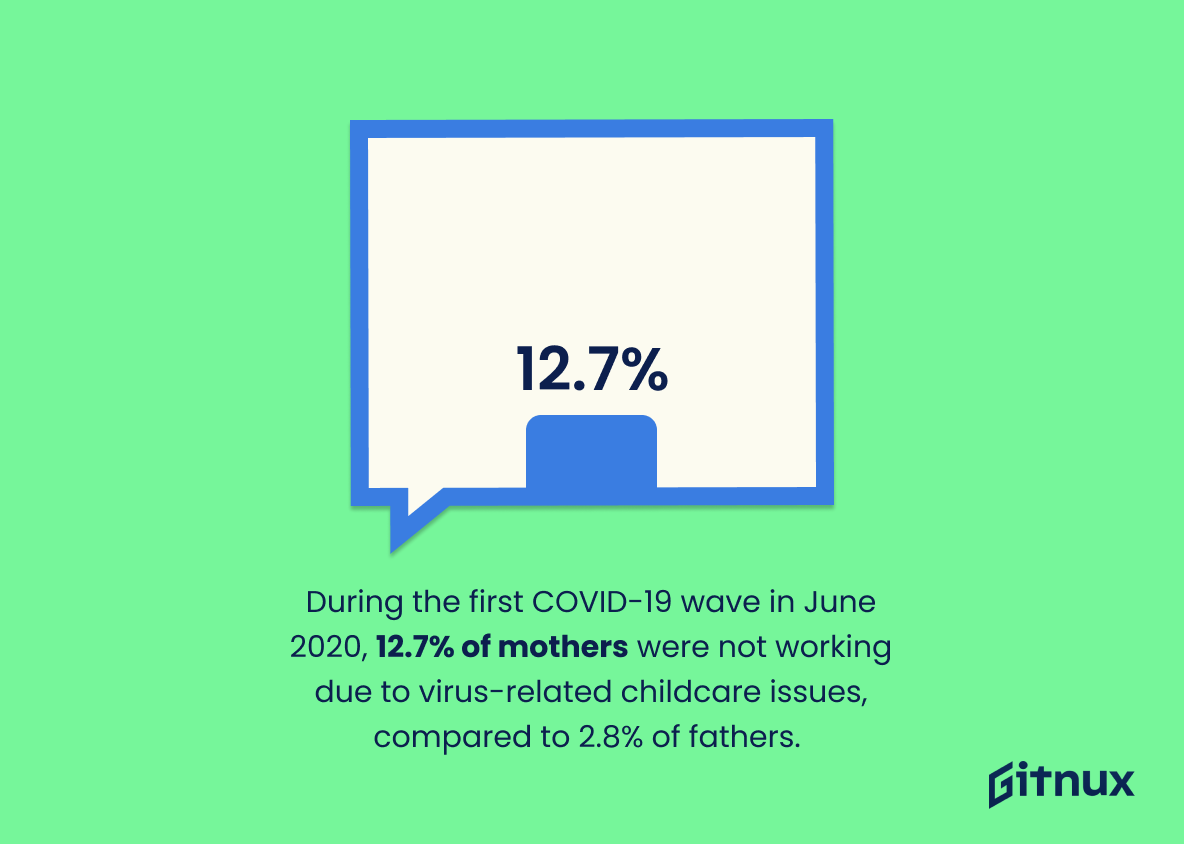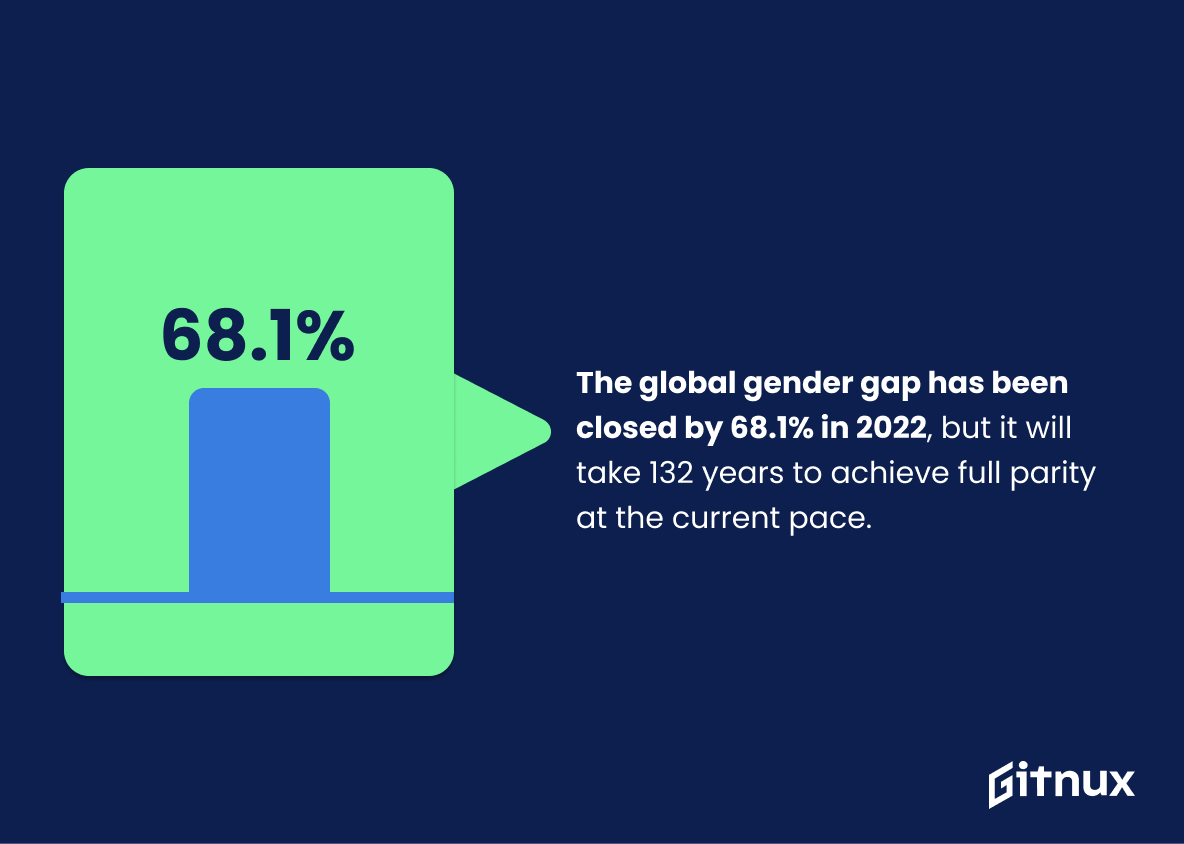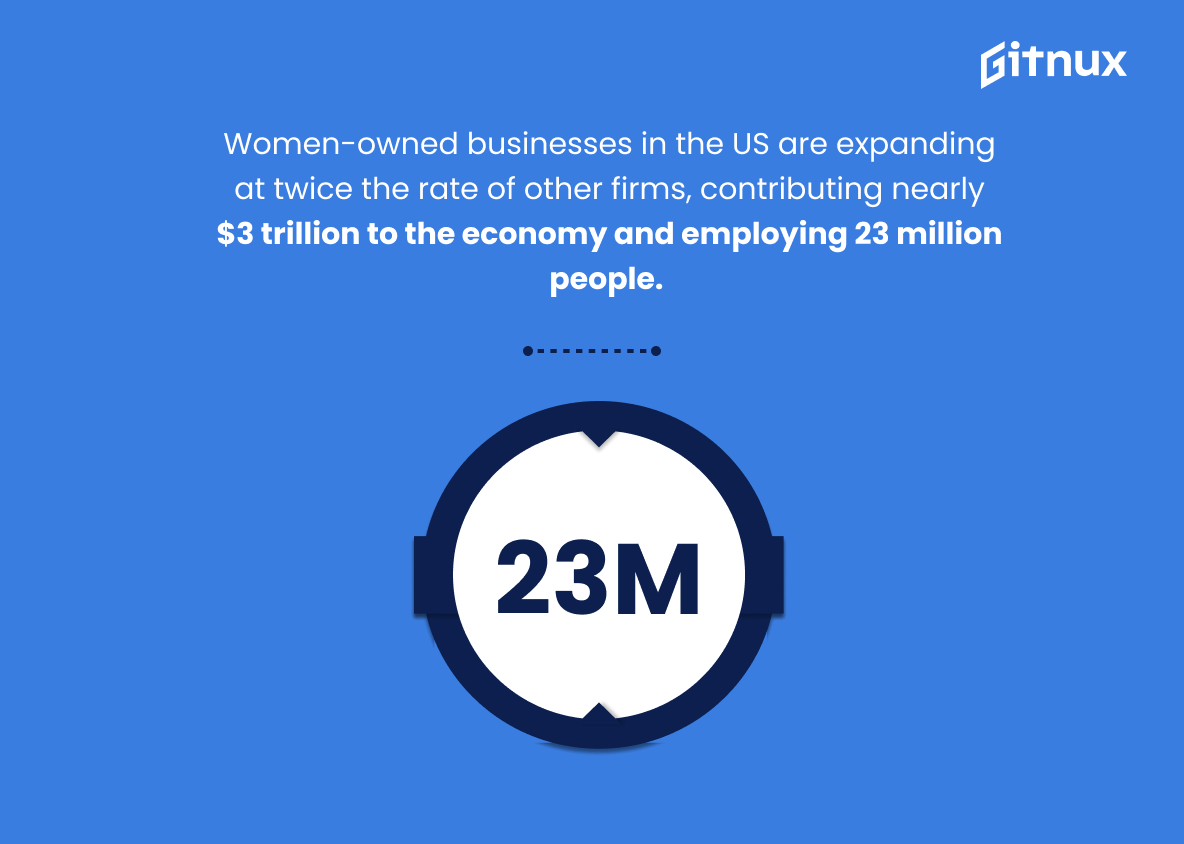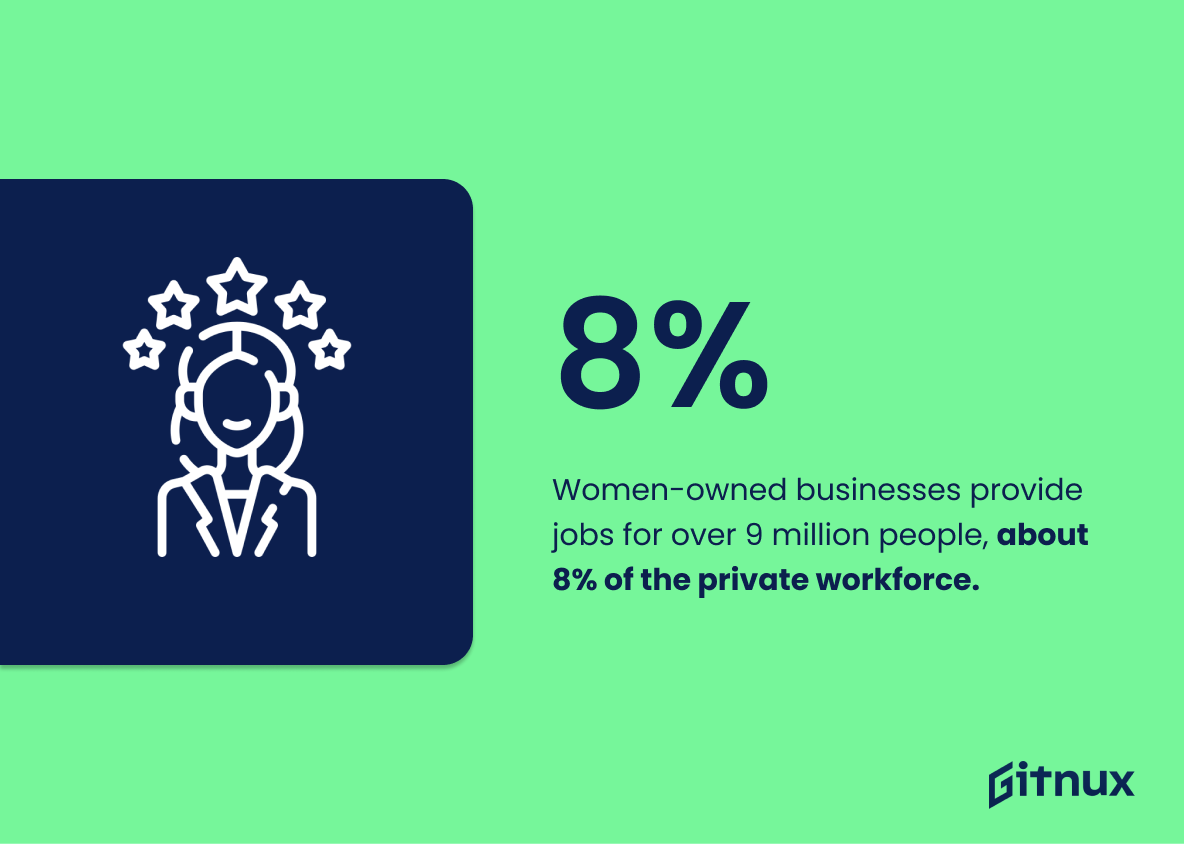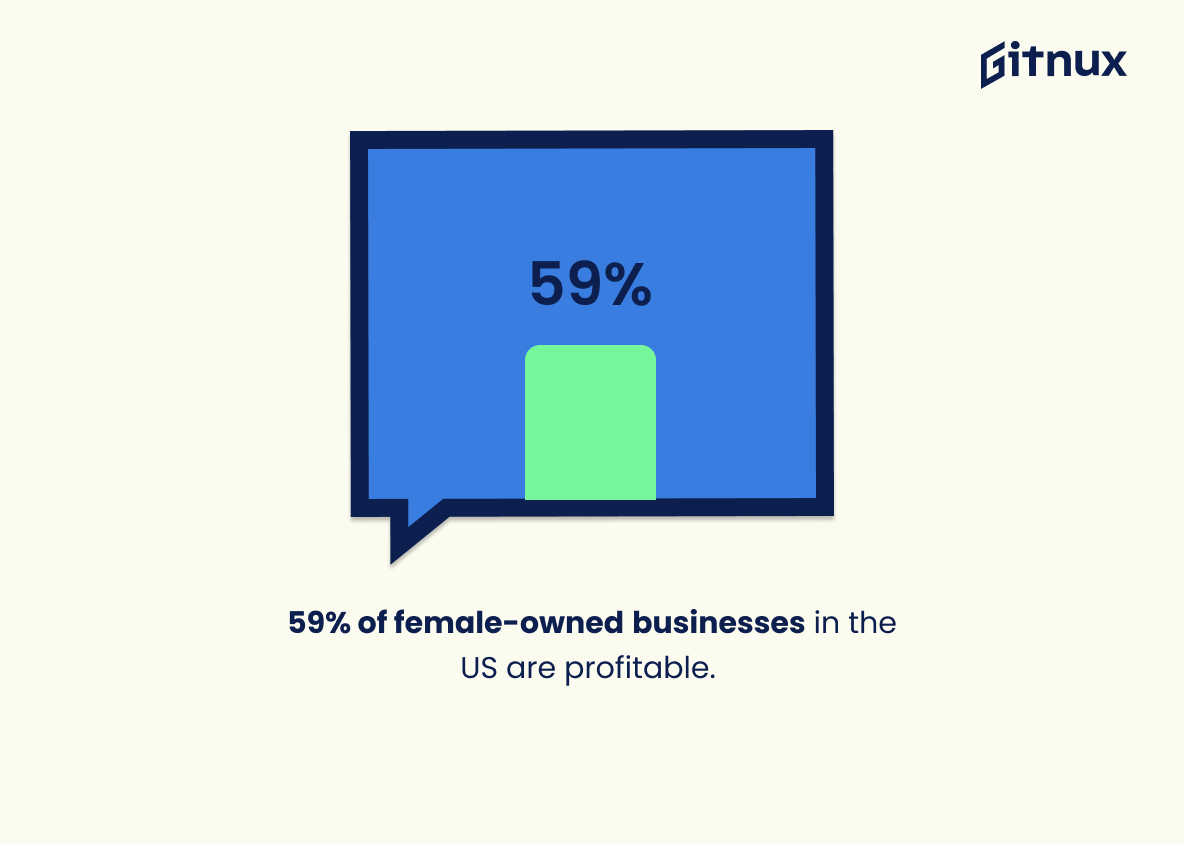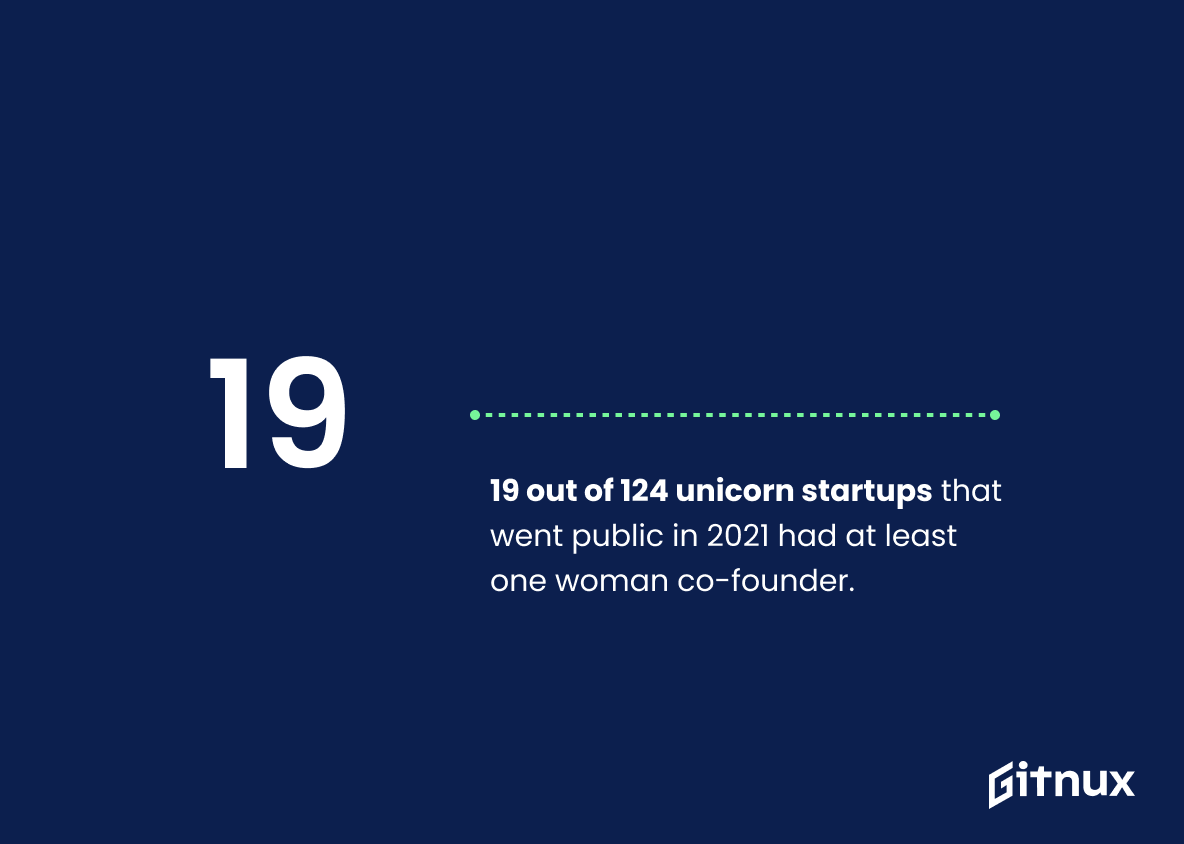Female entrepreneurship is certainly on the rise. Women are increasingly taking the lead in business, and the numbers are growing. From the number of women-owned businesses to the amount of venture capital funding women receive, the data is telling a story of progress and change. It is an exciting time for female entrepreneurs, and the future looks bright. With more and more women taking the lead, it is clear that female entrepreneurship is here to stay.
In this article, we will discover the main female entrepreneurship statistics, its significant contributions to economic growth, as well as obstacles and challenges for women in starting and growing businesses.
Female Entrepreneurship: The Most Important Statistics
Women started 49% of new businesses in the US in 2021, up from 28% in 2019, according to a new study.
Women-owned firms contribute nearly $3 trillion to the economy and are directly responsible for 23 million jobs.
The Current State Of Female Entrepreneurship
Over the past two decades, there has been a significant increase in the number of women entrepreneurs, with a 114% rise in the amount of female business owners.
In the United States, there are almost 13 million businesses that are owned by women, accounting for 42% of all companies in the country.
This means that four out of ten businesses are owned by women, generating around $1.8 trillion annually.
The percentage of women who started new businesses in the US has also increased dramatically, from 28% in 2019 to 49% in 2021.
The number of Black or African American entrepreneurs has also tripled from 3% in 2019 to 9% in 2021.
In 2021, there were more than 5.4 million new businesses established in the US, setting a new record.
Furthermore, women in the US create 1,817 businesses every day.
In the UK, almost 40% of microbusinesses are now run by women, up from 32% before March 2020, according to GoDaddy’s Venture Forward study of 2.3 million microbusinesses.
Female entrepreneurship is also increasing in developing countries, with between 8 million and 10 million small and medium-sized enterprises across the developing world having at least one female owner, as stated in the Female Entrepreneurship Resource Point report by the World Bank.
The Gender Gap In Entrepreneurship
According to female entrepreneurship statistics for 2022, only 22.4% of small business owners in the US are women.
The Global Gender Gap Report 2022 by the World Economic Forum shows that more women than men are affected by the pandemic.
According to ILO data, at the global level, unemployment rates spiked from 5.4% in quarter 4 of 2019 to 7.9% in quarter 3 of 2020 for men, and 6.8% in 2019 to 9.6% in 2020 in the same quarter for women.
Unemployment rates for both men and women have increased globally, however with women having a higher rate of unemployment in quarter 4 of 2021 (7.8%) than men (6.5%).
Women in upper-middle-income countries have been particularly impacted by business exit during the pandemic, with a 74% increase from 2019 to 2021, compared to 34% for men.
The pandemic has also had a disproportionate impact on women in terms of caring responsibilities, with time-use surveys showing that women have taken on a larger burden of home-schooling and childcare.
A US study suggests that during the first COVID-19 wave in June 2020, 12.7% of mothers versus only 2.8% of fathers were not working due to virus-related childcare issues.
On the bright side, the Global Gender Gap Report 2022 shows a positive trend in the roles that women are taking on.
The data indicates that women’s share of professional and technical roles has increased by 6.7%, and there are more women in senior, legislative, and managerial roles, with this share up by 5.4%.
While the Health and Survival gender gap has closed by 95.8% and Educational Attainment by 94.4%, the Economic Participation and Opportunity gender gap has closed by 60.3%, and Political Empowerment by 22%.
The report also notes that the global gender gap has been closed by 68.1% in 2022, but at the current pace, it will take 132 years to achieve full parity.
Check out our latest Statistics On Entrepreneurship
The Benefits Of Female Entrepreneurship
Female entrepreneurs play a significant role in boosting economic growth and reducing poverty across the globe.
In the US, businesses owned by women are expanding at more than twice the rate of all other firms, contributing almost $3 trillion to the economy and providing jobs for 23 million people.
These businesses generate approximately $1.9 trillion in revenue.
As the number of women-owned businesses is growing, they require more employees, which in turn decreases the unemployment rate.
Statistics show that about 14% of these businesses employ between 11 and 50+ workers.
Women-owned businesses provide jobs for more than 9 million people, which accounts for roughly 8% of the total private workforce.
From 2007 to 2018, the percentage of total employment in these companies increased from 6% to 8%, with the revenue share simultaneously increasing from 4% to 4.3%. This percentage increases to 14% if we include companies with equal male and female ownership.
According to the latest data, 59% of female-owned businesses in the US are profitable.
The most recent statistics for women entrepreneurs show that in 2021, 14% of 595 unicorn startups had female founders or co-founders.
Similarly, 19 out of 124 total unicorn startups that went public in 2021 had at least one woman co-founder.
Challenges Faced By Female Entrepreneurs
Women are making progress in entrepreneurship globally, but there are still challenges and disparities between men and women.
According to the World Bank, men outnumber women 3 to 1 in business ownership. In some regions, such as the Middle East and North Africa, only 23% of business owners are women, and in South Asia, the figure is only 18%.
There are several obstacles that women entrepreneurs face in developing economies, including lack of access to financing and legal inequalities.
Women are more likely to face funding challenges compared to men, with only about 2.3% of venture capital going to women entrepreneurs.
Because of this, only 2% of women-owned startups generate $1 million, whereas men are 3.5 times more likely to achieve this number.
The pandemic has disproportionately affected women’s participation in the workforce, with women losing more working hours than men. Women’s participation in the workforce has fallen: from 60.1% in the 2021 edition of the Forum’s 146-country report to 51.7% this year.
Women also face challenges in accessing financial accounts and services, with a lower share of women having access to financial accounts than men in all regions except North America.
In Europe & Central Asia, men are 4% more likely to have a financial account than women. This gap is largest in Middle East & North Africa, where men are 19% more likely to have a financial account than women.
Legal and regulatory barriers can also impact women’s ability to run successful businesses, with only 38 out of 141 economies providing equal legal rights for women and men in key areas such as opening a bank account, getting a job without permission from their spouse, and owning and managing property.
Additionally, 48% of women in business lack competent advisors to guide them through entrepreneurship.
Policies And Programs To Support Female Entrepreneurs
To support women entrepreneurs in low-income countries, the Women Entrepreneurs Finance Initiative has allocated $49.3 million to more than 15,000 women-led businesses.
This funding is expected to mobilize an additional $350 million from both public and private sector resources.
Over 65% of the most recent allocations will benefit women entrepreneurs in low-income countries.
The majority of startups, around 59%, have programs aimed at increasing the number of women in leadership roles.
Additionally, 65% of startups have some form of program to increase the number of women in executive positions, according to statistics on women-owned businesses.
There have been three financing rounds that total almost $300 million in allocations, which will expand programs supporting women-led businesses to 61 countries.
The Islamic Development Bank has received $11.25 million to support women engaged in entrepreneurial activities in the rice value chain in West Africa, according to statistics on women in business.
Supplementary Statistics
Female-founded start-ups generated a revenue of $730 billion in 2019.
This is a testament to the immense success of female-founded start-ups in 2019. It demonstrates that female entrepreneurs are capable of generating significant revenue and making a positive impact on the economy. This statistic is a powerful reminder that female entrepreneurs are a force to be reckoned with and should be taken seriously.
36% of small business owners in the US are women.
Women are increasingly taking the lead in small business ownership, and that they are making their mark in the business world. It is a testament to the hard work and dedication of female entrepreneurs, and serves as an inspiration to other women who may be considering starting their own business.
Women receive only 2.3% of Venture Capital funding.
Female entrepreneurs are not receiving the same level of support and resources as their male counterparts, which can have a significant impact on their ability to succeed in the business world. This lack of access to capital can be a major barrier to female entrepreneurs, and it is essential that we take steps to address this issue.
90% of women surveyed in a 2016 study cited entrepreneurship as a means to gain more flexibility.
Women are increasingly recognizing the potential of entrepreneurship to provide them with the flexibility they need to balance their personal and professional lives. This is an important insight that can help inform the conversation around female entrepreneurship and the challenges women face in the workplace.
88% of women-led businesses in the US have no employees other than the business owner.
It suggests that the majority of women-led businesses are unable to expand beyond the business owner, likely due to a lack of resources or access to capital.
In the US, minority-owned women-run businesses grew by 163% from 2007 to 2018.
Thus, there is an immense potential of female-run businesses and the impact they can have on the economy. It also serves as a reminder of the importance of providing support and resources to female entrepreneurs from minority backgrounds, so that they can continue to thrive and contribute to the economy.
In 2018, female entrepreneurs started 1,821 new businesses per day in the United States.
Women are taking the initiative to start their own businesses and are succeeding in doing so. This statistic is a testament to the hard work and dedication of female entrepreneurs and serves as an inspiration to other women who are considering starting their own businesses.
Women-led tech startups return 35% higher ROI than male-led tech startups.
When given the opportunity, women can achieve impressive returns on investment, outperforming their male counterparts. This is an important reminder that female entrepreneurs should not be overlooked when it comes to investing in tech startups.
In 2021, 7.2% of Fortune 500 CEOs were women.
This serves as a stark reminder of the gender gap that still exists in the corporate world. Despite the progress made in recent years, the fact that only 7.2% of Fortune 500 CEOs are women is a clear indication that there is still a long way to go before women can achieve true parity in the business world.
Women-owned businesses in the UK contributed about £95bn to the country’s economy in 2021.
It highlights the immense contribution of women-owned businesses to the country’s economy, demonstrating the potential of female-led businesses to drive economic growth. This statistic is a reminder of the importance of supporting female entrepreneurs and recognizing their potential to create jobs and wealth.
Female-owned businesses account for nearly 20% of all employer-owned small businesses in Canada.
Women are increasingly taking the initiative to start their own businesses and are succeeding in doing so. This is an inspiring reminder that women are capable of achieving great things in the business world and should be celebrated for their accomplishments.
In 2019, 21% of all Australian founders were female.
Despite the challenges that female founders face, they are still making strides in the business world. This statistic is a testament to the hard work and dedication of female entrepreneurs, and it serves as an inspiration to other women who are considering starting their own businesses.
There has been a 114% increase in women-owned businesses in the US since 2000.
Female entrepreneurs are increasingly taking the reins and making their mark in the business world. This is an inspiring statistic that should encourage more women to pursue their entrepreneurial dreams.
Women entrepreneurs in India employ over 13.5 million people as of 2020.
It demonstrates that women entrepreneurs are not only creating their own businesses, but are also providing employment opportunities to millions of people. This is a remarkable achievement and serves as an inspiration to other women entrepreneurs around the world.
In Brazil, the number of women entrepreneurs increased by 34% between 2001 and 2012.
This is an encouraging sign for female entrepreneurs everywhere, as it demonstrates that with the right support and resources, women can achieve success in the business world.
In 2021, the number of women entrepreneurs grew in Indonesia by 66%.
Despite the challenges of the pandemic, women have been able to make strides in the business world and are increasingly becoming a force to be reckoned with. This statistic is a powerful reminder that female entrepreneurs are capable of achieving success and should be celebrated for their accomplishments.
Women-owned businesses in South Africa make up 44% of all small and medium-sized enterprises.
Female entrepreneurs are a force to be reckoned with, and that their success should be celebrated and encouraged.
Conclusion
Female entrepreneurs are making a big impact on the economy. Despite the challenges they face, such as lack of access to capital and networks, they are succeeding in growing their businesses. Women are increasingly taking the lead in the business world and are becoming a powerful force in the global economy.
With more support and resources, female entrepreneurs can continue to drive economic growth and create jobs. It is clear that female entrepreneurs are an important part of the business landscape and their success should be celebrated.
FAQ
What are the key challenges facing female entrepreneurs?
Key challenges facing female entrepreneurs include lack of access to capital, gender bias, and lack of mentorship.
What are the best resources for female entrepreneurs?
The best resources for female entrepreneurs include networking events, online forums, and business incubators.
What is the most important factor for success in female entrepreneurship?
The most important factor for success in female entrepreneurship is self-confidence and determination.
How can female entrepreneurs find mentors?
Female entrepreneurs can find mentors by attending networking events, joining online forums, and reaching out to experienced entrepreneurs.
What are the benefits of female entrepreneurship?
Benefits of female entrepreneurship include increased economic opportunities, increased visibility of women in leadership roles, and increased access to resources.
References:
World Economic Forum: “Global Gender Gap Report 2022”, cited in February 2023 (Source)
World Economic Forum: “Here’s what women’s entrepreneurship looks like around the world”, cited in February 2023 (Source)
GEM: “Global Entrepreneurship Monitor Releases New Research Highlighting Women’s Entrepreneurship Trends Across The Globe”, cited in February 2023 (Source)
World Bank: “Women entrepreneurs needed—stat!”, cited in February 2023 (Source)
World Bank: “Female Entrepreneurship Resource Point – Introduction and Module 1: Why Gender Matters”, cited in February 2023 (Source)
What To Become: “20 Compelling Women Entrepreneurs Statistics”, cited in February 2023 (Source)
Legal Jobs: “Women Entrepreneurs Statistics”, cited in February 2023 (Source)
Forbes: “Overcoming Some Of The Barriers To Women Entrepreneurship”, cited in February 2023 (Source)
ZipDo, cited June 2023: Female Entrepreneurship Statistics
